Portable Confined Space Rescue Equipment User Guide
February 13, 2022
Your job takes you all over the map. Our portable confined space rescue equipment protects you wherever you go.
While fixed fall protection and recovery systems undoubtedly have their place, most crews also need fall protection tools capable of performing in the field where a lot of confined space work takes place.
Field work is challenging and dangerous for many reasons, not least that the uncontrolled environment can create complications when it comes to deploying equipment. City streets, rural roads, and isolated vaults all present unique challenges.
Knowing the capabilities, features, and limits of each piece of portable equipment in your confined space fall protection lineup is more than a matter of convenience: it can affect everything from speed of rescue to overall safety.
From the complex engineering that undergirds our portable anchorage systems to the harness you wear every day, it pays to know your equipment. You don’t want to go into a high-pressure rescue needing to learn on the fly.
In that spirit, let’s dive in.
Portable Confined Space Rescue Equipment Basics
OSHA does not have a separate regulation detailing requirements for potable confined space rescue equipment. The regulations that govern permanently installed systems extend to cover any portable setup you use in the field.
Even in the backcountry, far from the controlled confines of a shop or factory, employers are still required to provide a fall protection system when a drop of four feet or more is present on the job site.
Employers must also use railings, covers, or toe boards to keep workers from accidentally walking into holes, falling off elevated work surfaces, or falling into hazards like vats of acid or conveyor belts.
Types of Confined Space Rescue: Which Should you Use?
There are three types of confined space rescue. They are, in order of preference: self-rescue, non-entry rescue, and entry rescue.
Self-rescue is the most straightforward—and it can stretch the definition of the word “rescue.” If a confined space entrant notices a hazard or if they are injured or ill, but not so severely that they need assistance, they can exit the confined space themselves.
Generally speaking, the fewer rescuers you have entering a confined space, the better (would-be rescuers account for most confined space deaths), so it should be apparent why self-rescue is the best option whenever possible.
We’re not going to spend more time discussing self-rescue, save to say that this rule makes self-rescue (and all rescue) possible: train your workers to recognize hazards so they can act promptly to protect themselves and each other.
If a confined space entrant is, for one reason or another, not capable of self-rescue, then it is up to the supervisor, confined space attendant, and other members of the designated rescue team to decide whether non-entry or entry rescue is the most viable option.
The difference between entry and non-entry rescue is simple but crucial: non-entry rescues are conducted without sending rescue personnel into the confined space, while entry rescues rely on trained rescuers being sent in to aid affected workers.
If non-entry rescue is possible, OSHA regulations state that should be the preferred option over entry rescue. We’ve outlined in depth what conditions make non-entry rescue possible in a previous post.
Whether you conduct a non-entry or an entry rescue, running this operation in the field presents unique challenges.
Portable Confined Space Rescue Equipment Profiles
All equipment must pass a thorough inspection before being used in the field. Check out our OSHA Checklist blog to see how to cover all of your inspection bases.
Harness
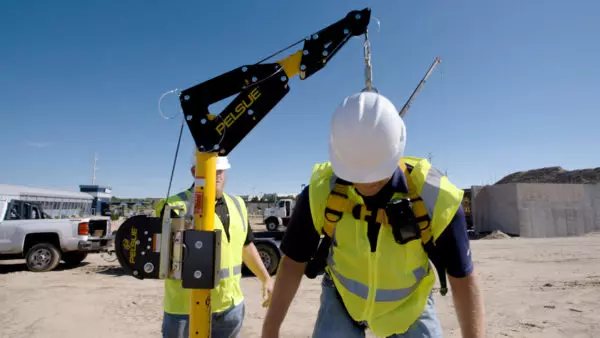
Perhaps the most basic piece of fall protection equipment out there, a harness is required for all workers in or around a confined space.
Harnesses are worn around the worker’s legs and trunk, and feature, at the very least, a D-ring on the back. That ring is the primary connection used for rescue.
Carabiners, Wichard Hooks, and Swivel Snap Hooks
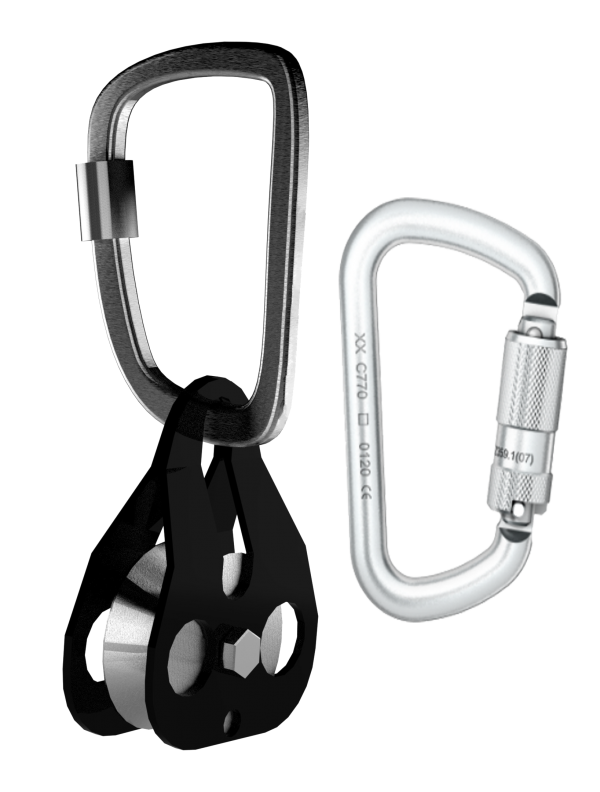
These connectors are likely what you will encounter while working with a portable confined space fall protection system.
Carabiners and Wichard hooks are quite similar, roughly oval shaped with a gate (Wichard hook) or a lock (carabiner).
Swivel snap hooks are generally smaller than the other two, shaped like the letter P, with a slider that lowers the gate and secures the payload to the hook.
Generally speaking, carabiners and Wichard hooks are used to attach rescue lines to workers, while some combination of the three hooks are used to attach pieces of equipment.
Stainless Steel Cable
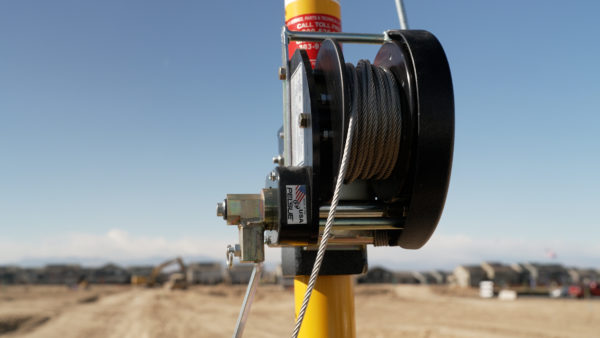
Along with synthetic rope, stainless steel cable is the most common type of rescue line used in personnel hoists. If corrosive or toxic substances are present, a synthetic rope like Technora® should be used instead.
Technora® Rope
It’s rope, what is there to say about it? A lot.
Technora® rope can be used in all the same circumstances as stainless steel cable but is also resistant to corrosion and acid wear. It doesn’t do well with a sharp bend in the line, but if a hoist is being used as directed, that shouldn’t be an issue.
Hoists
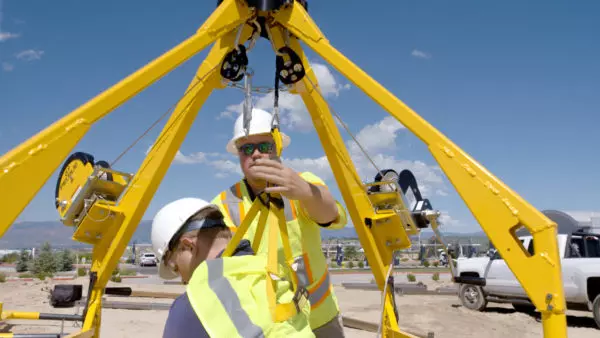
Hoists were made to do one thing and do it well: raise and lower personnel and equipment.
Our Personnel Hoist mounts on an anchorage device, along which the line is wound and attached to the confined space entrant. Once the worker is safely in the confined space, they detach and go about their work before attaching for the exit.
If a worker is incapacitated, another confined space entrant must attach the hoist line to them before the space can be evacuated. This means that, if a Personnel Hoist is the only retrieval device onsite, non-entry rescue is not possible.
Click here to see how to set up and take down the Pelsue Personnel Hoist.
Our Quick Rescue Hoist addresses this. The line is not permanently attached to the hoist drum, meaning that when used with the Rescue Pole (below), the line can be attached to an entrant without sending another person into the confined space.
Click here for a video on how to set up and remove the Pelsue Quick Rescue Hoist.
Equipment hoists are designed to bear heavier loads so as to retrieve tools from evacuated confined spaces. They should never be used to retrieve entrants.
Standard SRL
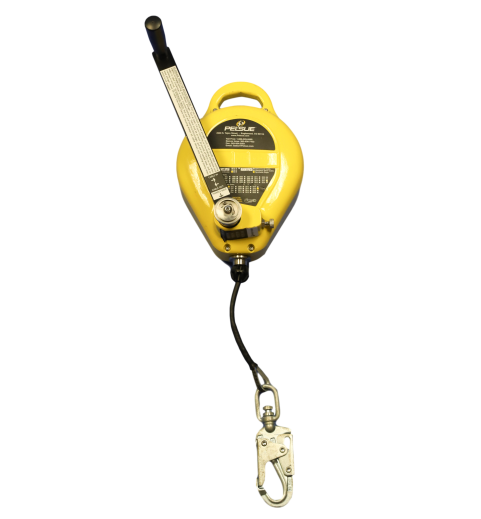
A Standard Self-Retracting Lifeline (SRL—also sometimes called a self-retracting lanyard) is used for workers either descending or ascending into confined spaces, or who will be working in areas with a fall risk.
Your SRL is designed to engage a brake if a worker begins to fall, locking up much like a seatbelt. The SRL has saved countless lives on the job with this simple system.
A standard SRL does not have retrieval functions. If a worker falls while attached to a standard SRL, they must be attached to a separate device to raise or lower them to safety.
3-Way SRL
Our 3-Way SRL provides the same lifesaving fall arrest functionality as the Standard SRL, but also features the ability to raise or lower workers attached to the line.
Similar to the Personnel Hoist, if a worker is not attached to the line, rescue from a confined space will necessitate other entrants. Beside that however, the 3-Way SRL offers the best all-around functionality of all our portable retrieval devices.
Rescue Pole
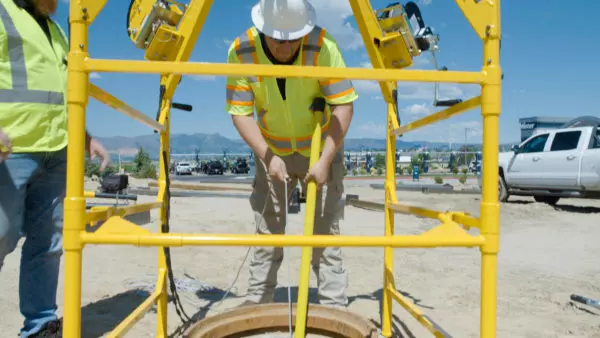
The Rescue Pole is engineered specifically for non-entry confined space rescue. The end of a retrieval line is wound around the clip on the pole and attached to the harness of a fallen worker.
By extending the reach of confined space attendants and other rescuers up to 16’, the Rescue Pole expands the scenarios where non-entry rescue is possible and thereby helps your crew stay safe while rescuing the stricken entrants.
LifeGuard 3-in-1 Confined Space Safety System
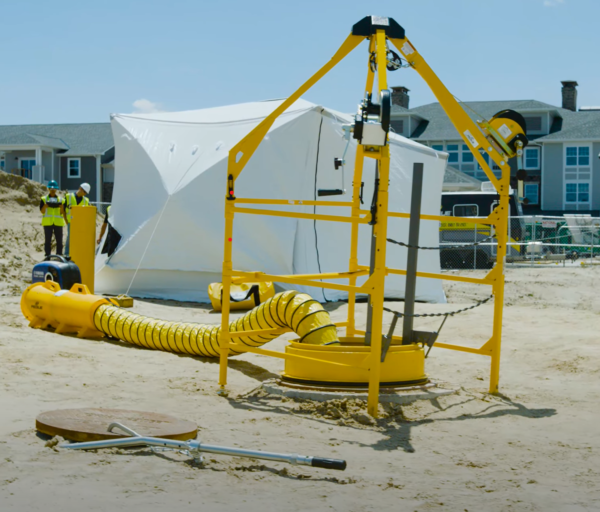
Finding a portable anchorage point means looking for a combination of easy, fast setup and robust functionality. Our LifeGuard unit helps with many aspects of confined space rescue that make it a portable workhorse.
The built-in barricade helps keep people away from the confined space entrance, while the overhead anchorage point allows you to simultaneously use a hoist or SRL to both recover workers or arrest falls.
Designed to be set up in minutes, the LifeGuard adapts to a broad range of field work, with the leveling feet adjusting to uneven terrain (though especially rough ground is better suited to the Vehicle Hitch-Mounted Davit, below).
Portable Davit System
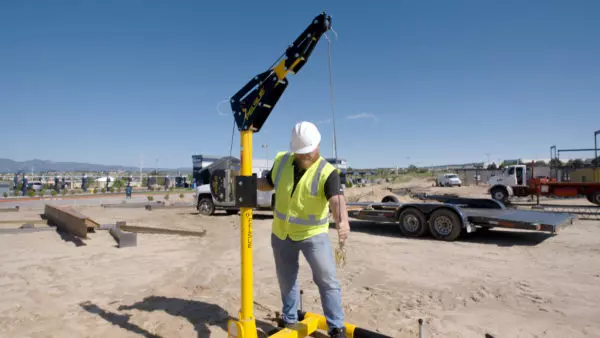
The Pelsue Portable Davit System is made for rapid deployment in urgent rescue situations. It’s simple but secure assembly can easily be done by one person in minutes before being rolled over the confined space.
Built-in adjustable feet and a level on the center post help you ensure the Davit is safely set up and ready to bear the load of an attached worker.
Vehicle Hitch-Mounted Davit System
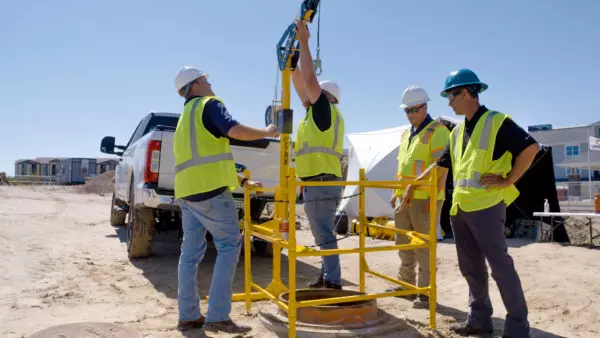
For situations where the terrain makes the LifeGuard or Portable Davit impractical or impossible to set up, the Vehicle Hitch Mounted Davit System uses your work truck or van as its base, negating the need for smooth ground. Just back your vehicle close to the confined space entrance and you can set up the Davit System in mere minutes.
With these tools available to you, you have access to the portable confined space rescue equipment needed to ensure worker safety wherever the job takes you.
Confined Space Safety Equipment in Different Settings
In an urban or busy suburban environment, you must set up an area a safe distance from the confined space entrance where you and your team can deploy your portable confined space rescue equipment. Extra traffic this can be quite challenging.
Traffic control is a huge theme when we look at the hazards of urban confined space fieldwork. Not only do workers need adequate space to deploy equipment, but you must also ensure that pedestrians and vehicles are kept well away from confined space entrances.
On the other hand, a more remote setting means that any emergency medical services that an injured, ill, or exposed worker might need will likely take longer to reach you. This makes quick extraction all the more crucial.
Plus, natural variances in terrain mean that you will very likely need to set up your portable confined space rescue equipment differently than on a city street.
Wherever your jobsite is, the onus is on the employer to develop a confined space rescue plan tailored to that site, which takes into account the particulars of the portable confined space rescue equipment you will be using.
As always, rely on the manuals and instructions for your specific product during training, planning and usage.

